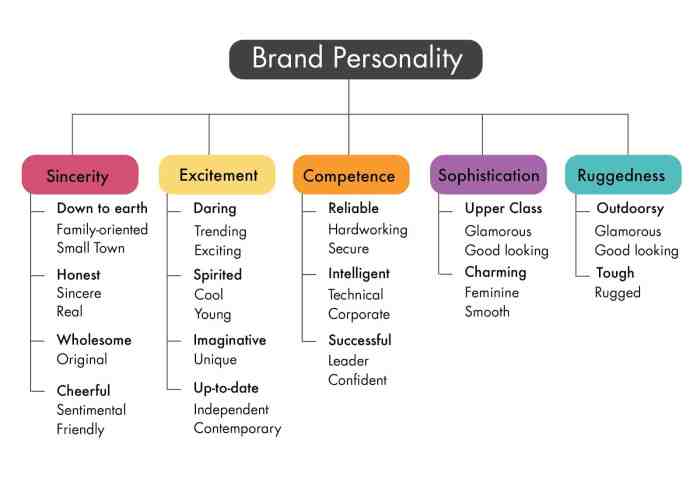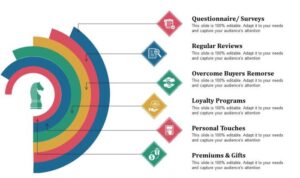Developing Brand Identity dives deep into the essence of creating a powerful and recognizable brand that resonates with consumers. From defining brand identity to communicating it effectively, this topic explores the key elements that make brands stand out in a crowded market.
As we unravel the intricacies of brand strategy, design, and communication, get ready to embark on a journey that will transform the way you view branding in the digital age.
Understanding Brand Identity: Developing Brand Identity
Brand identity in marketing refers to how a company wants to be perceived by customers. It encompasses the visual elements, messaging, and values that distinguish a brand from its competitors.
Elements of Brand Identity
- Logo: A symbol or design that represents the brand visually.
- Color Palette: Consistent colors used across all brand materials to evoke certain emotions or associations.
- Typography: Specific fonts and styles used in branding to create a cohesive look and feel.
- Messaging: The language and tone used in communication that conveys the brand’s personality and values.
- Visual Style: Overall aesthetic and design elements that contribute to brand recognition.
Importance of Strong Brand Identity
A strong brand identity is crucial for businesses for several reasons:
- Brand Recognition: A distinct brand identity helps customers easily identify and remember a brand.
- Brand Loyalty: Consistent branding builds trust and loyalty among customers.
- Competitive Advantage: A strong brand identity sets a business apart from competitors in the market.
- Customer Connection: A well-defined brand identity helps create an emotional connection with customers.
Developing a Brand Strategy
Developing a brand strategy is crucial for establishing a strong and recognizable brand in the market. It involves defining your brand’s purpose, values, target audience, and positioning in relation to competitors.
Steps in Creating a Brand Strategy
- Conduct market research to understand your target audience and competitors.
- Define your brand’s unique selling proposition (USP) and key messaging.
- Create brand guidelines to ensure consistency in visual and verbal communication.
- Develop a brand personality that resonates with your target audience.
- Implement strategies for brand promotion and engagement.
Examples of Successful Brand Strategies
- Apple: Known for its innovative products and sleek design, Apple’s brand strategy focuses on simplicity and user experience.
- Nike: Nike’s brand strategy revolves around inspiring athletes and promoting a culture of performance and achievement.
- Coca-Cola: Coca-Cola’s brand strategy emphasizes happiness and sharing moments of joy with its iconic red branding.
Aligning Brand Strategy with Business Goals
Developing a brand strategy that aligns with the overall business goals is essential for long-term success. By ensuring that the brand messaging, positioning, and values are in sync with the company’s objectives, businesses can create a cohesive and impactful brand presence in the market.
Creating Brand Assets

Creating brand assets is a crucial part of establishing a strong brand identity. One of the key elements in this process is designing a logo that effectively reflects the brand identity.
Designing a Logo
Designing a logo involves creating a visual representation of the brand that is unique, memorable, and easily recognizable. The logo should encapsulate the values, personality, and essence of the brand. It is essential to consider factors such as color, shape, and typography to ensure that the logo effectively communicates the brand identity to the target audience.
Choosing Colors and Fonts
Choosing the right colors and fonts for brand assets is also crucial in creating a cohesive brand identity. Colors evoke emotions and can convey brand personality, while fonts can communicate the brand’s tone and style. Consistency in colors and fonts across all brand assets helps in reinforcing brand recognition and creating a unified brand image.
Consistency Across Brand Assets
Consistency across brand assets, including the logo, colors, fonts, imagery, and messaging, is essential for building brand recognition. When consumers encounter consistent brand elements across various touchpoints, it reinforces brand recall and strengthens brand association. Consistent brand assets also help in establishing brand credibility and trust among consumers.
Communicating Brand Identity

When it comes to communicating brand identity, there are various channels that can be utilized to reach the target audience effectively. Social media, advertising, and packaging are some of the key platforms that brands can leverage to convey their unique identity and values.
Social Media
- Platforms like Instagram, Facebook, and Twitter allow brands to engage with their audience in real-time and showcase their brand personality through visual content and interactive posts.
- By creating a consistent brand voice and aesthetic across all social media channels, brands can strengthen their identity and build a loyal following.
- Interacting with followers, responding to comments, and running targeted ad campaigns can help reinforce the brand’s message and values.
Advertising, Developing Brand Identity
- Through strategic advertising campaigns on TV, radio, print, and digital platforms, brands can communicate their key messages and values to a wider audience.
- Using storytelling and emotional appeal in advertisements can create a strong connection with consumers and leave a lasting impression of the brand.
- Consistency in brand messaging and visuals across different advertising channels is crucial for building brand recognition and trust.
Packaging
- Packaging plays a significant role in communicating brand identity, as it is often the first point of contact with the consumer.
- Brands can use packaging design, colors, and logos to convey their brand values, personality, and quality of products.
- Innovative and eco-friendly packaging solutions can also help differentiate a brand from its competitors and attract environmentally conscious consumers.





